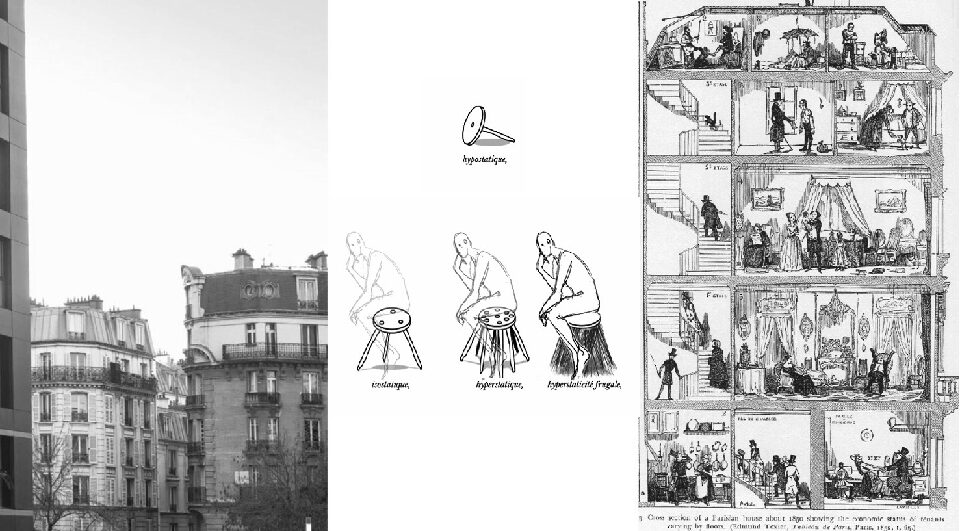Hyperstaticity
Narrative

The Generosity of Voids
In construction, when working out the size of a structure, calculations are made to determine the absolute minimum amount of material necessary to support the vertical load distribution. The resulting structures are described as isostatic.
Hypostatic structures are impossible to realize, because they would collapse. Minor hyperstaticity is sometimes allowed, but total hyperstaticity calls for more materials and so incurs waste and additional costs. However, by constructing buildings that are hyperstatic to high degrees, structures become intrinsically robust allowing them to absorb hazards and so lose one, two, or even three systems and still perform their initial function.
Take a chair for example. Isostatic chairs have three legs. The legs must be carefully arranged so that a person can sit without tipping, while it would be very difficult to maintain one’s balance on a chair supported by two legs, which would make it hypostatic. A four-legged chair exhibits hyperstaticity of degree one. We can imagine making chairs with five, six, or even seven legs. The advantage of a chair with seven legs is that if one of them breaks, it still behaves like a chair, and even with two broken legs, it would continue to fulfill its function.
From this we can take that the more a structure is hyperstatic, the more it has the capacity to absorb hazards and resist incidents. Breaking one leg of a seven-legged chair would have no serious consequences, would not cause damage to its structure, and would not cause the user to fall.
Generous voids and generous filled spaces, which in today’s age of sobriety we would call waste, therefore fundamentally question the building of a city in terms of the capacity of an urban area to provide services today but also tomorrow, with a degree of resilience that would allow it to absorb the hazards of an uncertain future.